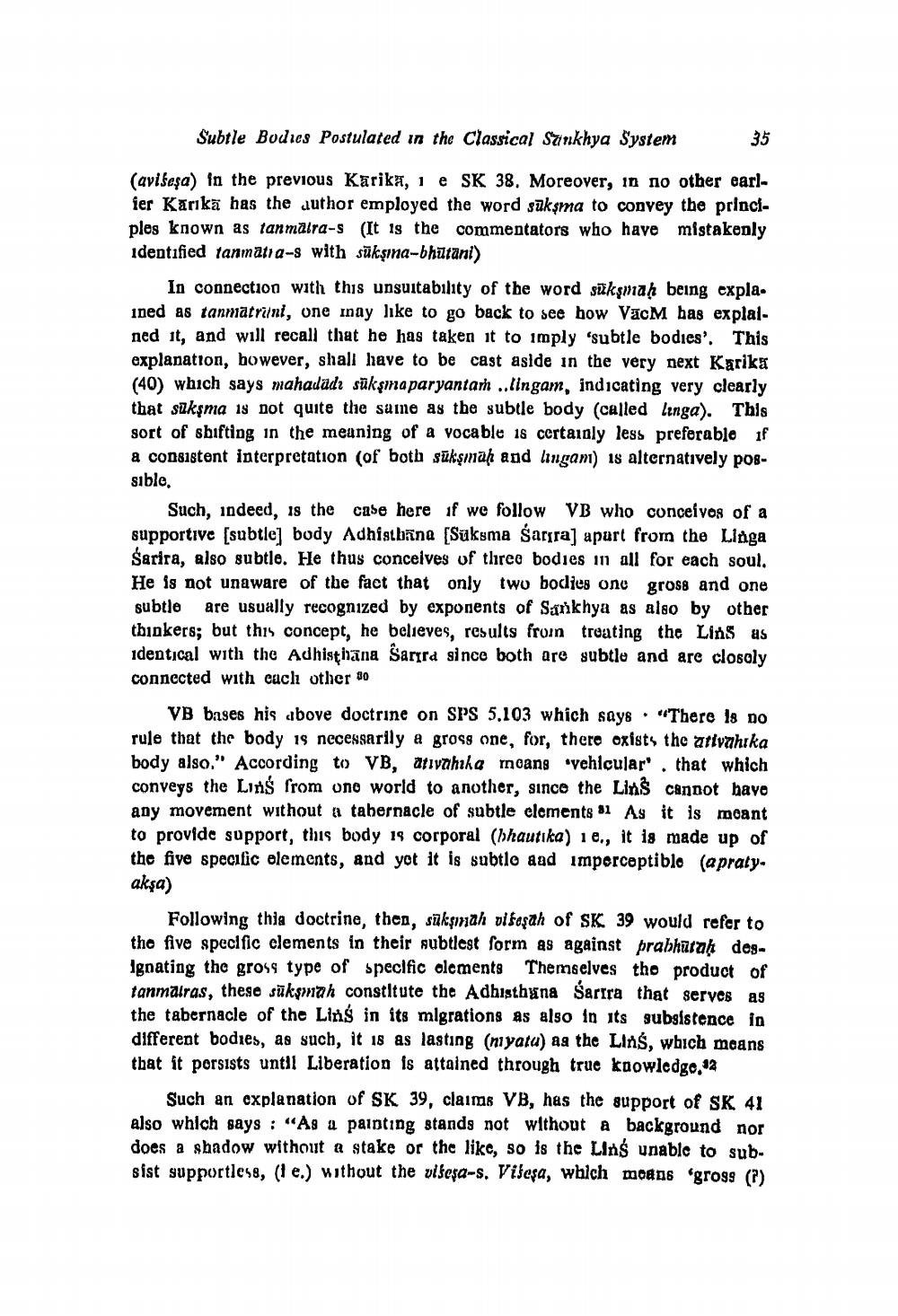________________
Subtle Bodies Postulated in the Classical Sankhya System
35
(aviteşa) in the previous Karika, 1 e SK 38. Moreover, in no other earlier Karika has the author employed the word sükşma to convey the principles known as tanmalra-s (It is the commentators who have mistakenly identified tanmatra-s with sūkşına-bhūtani)
In connection with this unsuitability of the word sükşmaḥ being expla. ined as tanmätrini, one inay like to go back to see how VacM has explalned it, and will recall that he has taken it to imply 'subtle bodies'. This explanation, however, shall have to be cast aside in the very next Karika (40) which says mahadadı sükşma paryantar .. lingam, indicating very clearly that sükşma is not quite the same as the subtle body (called linga). This sort of shifting in the meaning of a vocable is certainly less preferable if a consistent interpretation (of both sūkşmah and lingam) is alternatively possible.
Such, indeed, 18 the case here if we follow VB who conceivos of a supportive [subtle] body Adhisthana (Suksma sarira] apart from the Linga Sarira, also subtle. He thus conceives of three bodies in all for each soul. He is not unaware of the fact that only two bodies one gross and one subtle are usually recognized by exponents of Sankhya as also by other thinkers; but this concept, he believes, results froin treating the Lins as identical with the Adhistirana Sargra since both are subtle and are closely connected with each other 80
VB bases his above doctrine on SPS 5.103 which says. "There is no rule that the body is necessarily a gross one, for, there oxists the ativahika body also." According to VB, ativahika moans vehicular' . that which conveys the Lins from ono world to another, since the Lins cannot have any movement without a tabernacle of subtle elements 1 As it is meant to provide support, this body 19 corporal (bhautika) 1 e., it is made up of the five specific elements, and yet it is subtlo aad imperceptible (apraty. akşa)
Following this doctrine, then, sükşmah di foşah of SK 39 would refer to the five specific elements in their subtlest form as against prabharak desIgnating the gross type of specific elements Themselves the product of tanmairas, these sūkşmah constitute the Adhisthana Sartra that serves as the tabernacle of the Lins in its mlgrations as also in its subsistence in different bodies, as such, it 18 as lasting (niyatu) as the Lins, which means that it porsists until Liberation is attained through true kaowledge, 12
Such an explanation of SK 39, claims VB, has the support of SK 41 also which says: “As a painting stands not without a background nor does a shadow without a stake or the like, so is the Lins unable to subsist supportless, (1 e.) without the višeşa-s. Višesa, which means "gross ()




